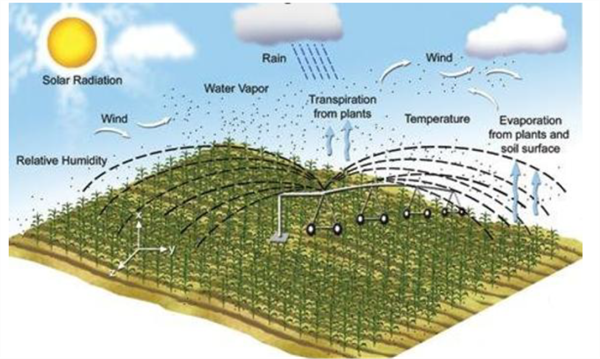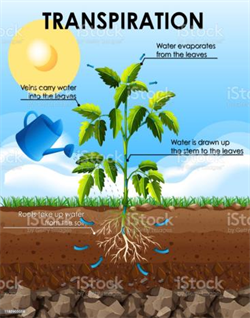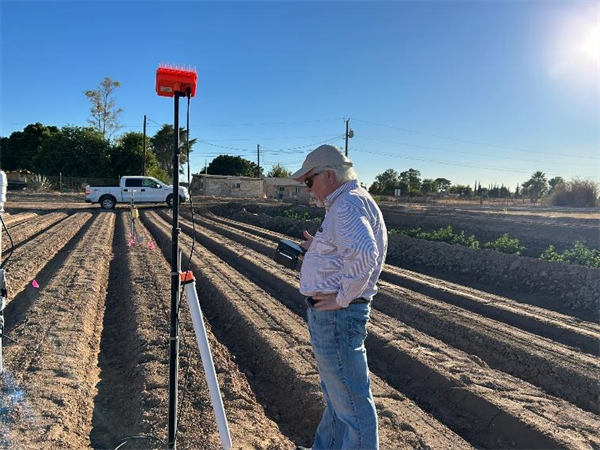The combination of two separate processes whereby water is lost on the one hand from the soil surface by evaporation and on the other hand from the crop by transpiration, is referred to as evapotranspiration (ET). Evaporation is the process whereby liquid water is converted to water vapor (vaporization) and removed from the evaporating surface (vapor removal). Water evaporates from a variety of surfaces, such as lakes, rivers, pavements, soils, and wet vegetation. Energy is required to change the state of the molecules of water from liquid to vapor. Direct solar radiation and, to a lesser extent, the ambient temperature of the air provide this energy (Fig:1).

Figure 1: Key factors driving ET in agriculture include solar radiation, temperature, wind,
humidity, and plant and soil water loss.
Transpiration consists of the vaporization of liquid water contained in plant tissues and the vapor removal to the atmosphere. Crops predominantly lose their water through stomata. These are small openings on the plant leaf through which gases and water vapor pass. The water, together with some nutrients, is taken up by the roots and transported through the plant (Fig: 2).

Figure 2: A diagram illustrates the process of transpiration in plants, where water is
absorbed by roots, moves through the stem, and evaporates from the leaf surfaces.
Why evapotranspiration (ET)?
ET is the largest component of the hydrological cycle and is one of the most critical variables in irrigation management, crop production, and the sustainability of agriculture. It has a direct impact on water resources availability and use, water quality, and the earth’s energy balance. Daily evapotranspiration (ET) rates are needed for irrigation scheduling. The evapotranspiration rate is normally expressed in millimeters (mm) or inches (in) per unit of time (e.g., an hour, day, week, month, or even an entire growing period or year).
Reducing evapotranspiration (ET) can lead to significant water savings by minimizing unnecessary water loss through soil evaporation and plant transpiration. By applying irrigation more efficiently only when and where it's needed, plants can maintain optimal moisture levels, reducing stress and promoting better growth. This can enhance nutrient uptake, improve plant health, and ultimately lead to higher yields. Moreover, conserving water through reduced ET is especially critical in arid regions, where freshwater resources are limited, and efficient water use is essential for sustainable agricultural production.
Below are strategies to reduce ET
- Irrigation Management: Implement precision irrigation by applying water only when needed based on real-time soil moisture data (Fig: 3). Use weather stations and sensors to optimize irrigation scheduling, and adopt drip or micro-irrigation systems to deliver water directly to the root zone, reducing evaporation and overall ET losses.
- Agronomic Strategies: Improve soil management through reduced tillage where applicable. While no-till is not typically suited for bedding systems used in leafy greens, other soil-conserving practices can still help retain moisture. Select crop varieties or hybrids that are more drought- and heat-tolerant, including short-season types to limit ET exposure. Adjust planting dates to avoid peak evaporative and heat stress periods, and adopt eco-fallow crop rotations (e.g., two crops over three years) to enhance soil water conservation and reduce overall ET.

Figure 3: Figure 3. Soil moisture sensor installation at the Valley Research Center,
Yuma, AZ.








